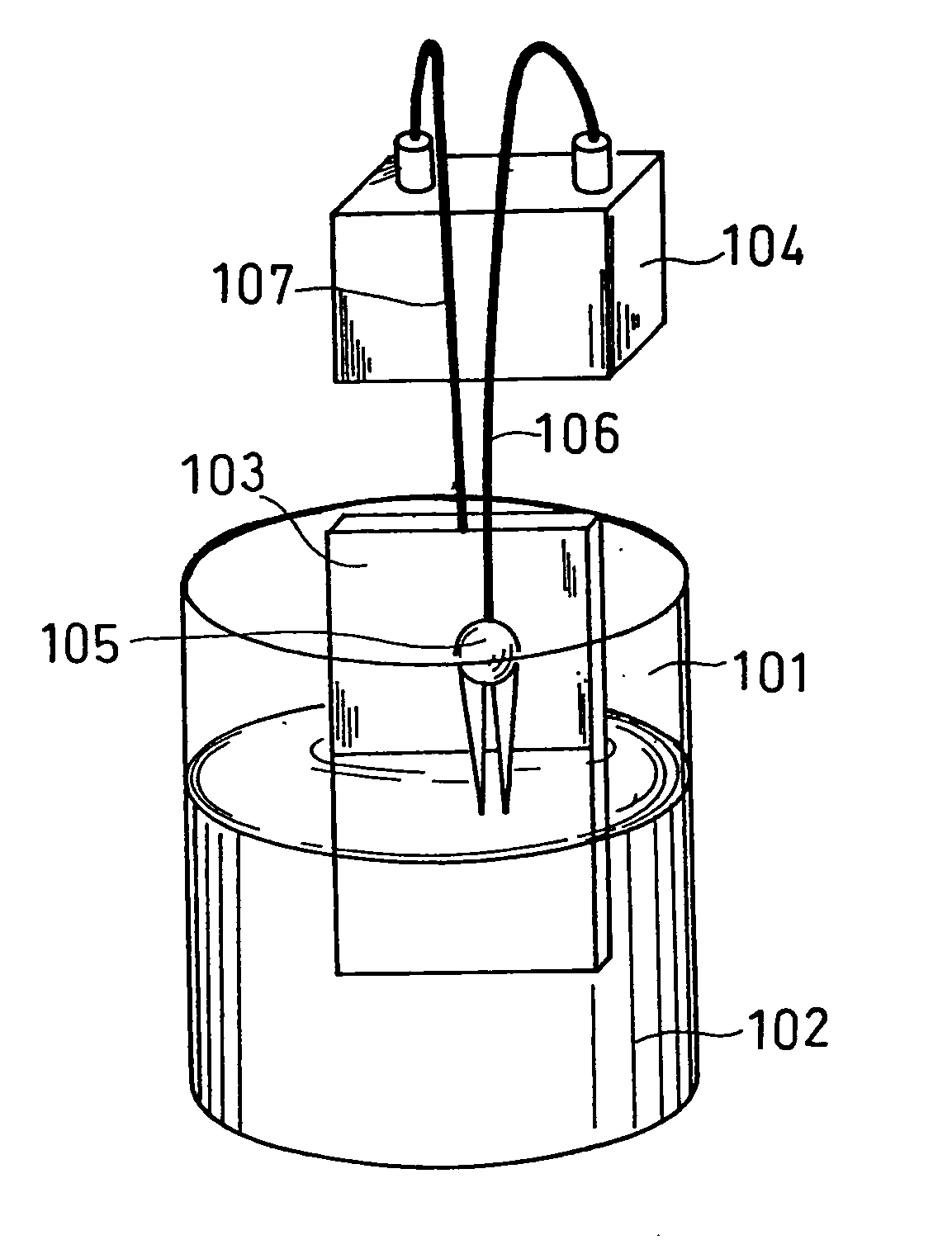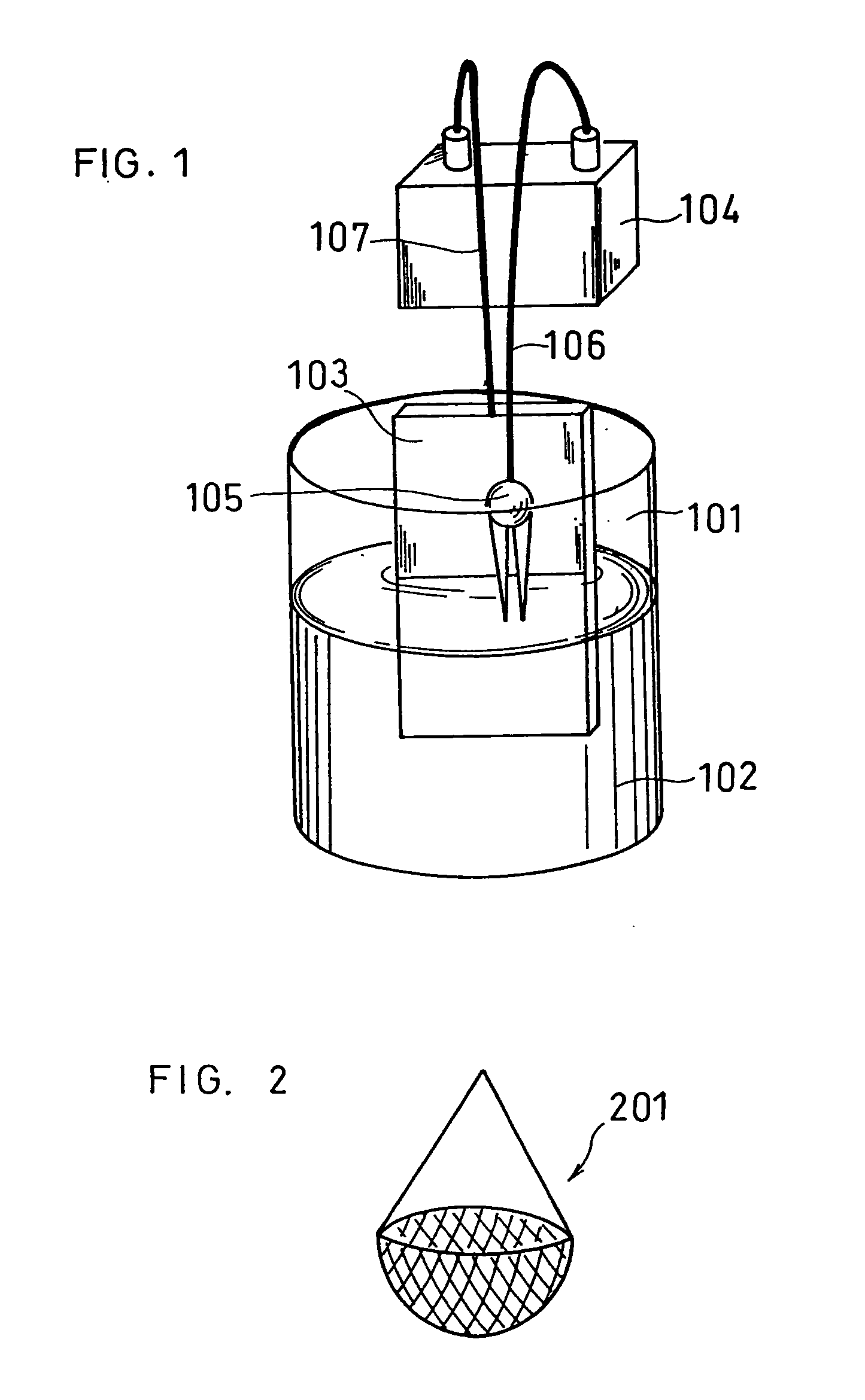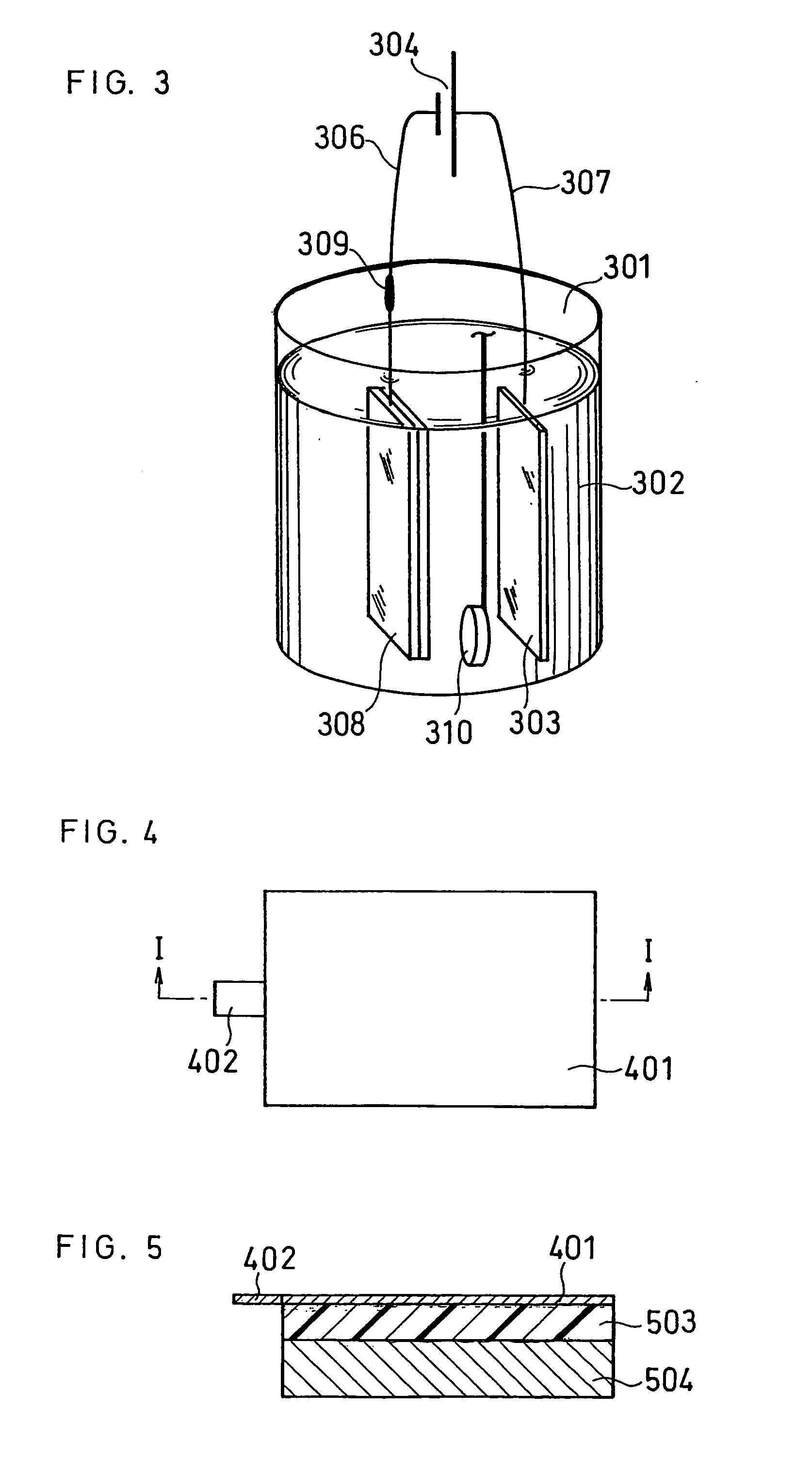Method and apparatus for releasing metal-resin joint
a metal-resin joint and metal-resin technology, applied in the direction of apparatus for removing/armouring cables, crystal growth processes, electric cable installations, etc., can solve the problems of increasing materials' requirements in strength, function, safety, cost, and inability to separate the two parts by mechanical methods, and achieves small energy consumption and low cost. , the effect of easy and convenien
- Summary
- Abstract
- Description
- Claims
- Application Information
AI Technical Summary
Benefits of technology
Problems solved by technology
Method used
Image
Examples
example 1
(i) Preparation of Sample 1
[0073] A steel plate of 0.10 mm in thickness, 50 mm in length and 30 mm in width was prepared. An adhesive comprising a synthetic rubber dissolved in a solvent (quick-curing bond G17 manufactured by Konishi Co., Ltd.) was applied onto one side of this steel plate, and an acrylic plate of polymethyl methacrylate of 50 mm in length, 30 mm in width and 2 mm in thickness was placed thereon so as to cover the steel plate. In this way, five same samples 1a, 1b, . . . 1e having a joint of a steel plate and an acrylic plate were obtained.
(ii) Fabrication of Separating Apparatus
[0074] Five 100 ml beakers made of tetrafluoroethylene were prepared, and an aqueous solution of sodium hydroxide (25° C.) of 0.01 M, 0.1 M, 3 M, 7 M or 15 M was introduced in an amount of 100 ml into each of the beakers. These beakers are named 2a, 2b, 2c, 2d and 2e. Into each beaker were immersed a nickel plate (50 mm long, 30 mm wide and 0.5 mm thick) serving as a counter electrode a...
example 2
[0084] Next, four apparatuses the same as the test apparatus of the sample 1d were produced. Then, by varying the value of the current passed between the sample and the counter electrode at room temperature, the change in time required to complete separation was examined. Table 2 shows the results together with the potentials of the metal portions of the samples relative to the standard hydrogen electrode.
TABLE 2Potential of metalportion relative toTime required toCurrent valuestandard hydrogencomplete separation(mA)electrode (V)(h)1−1.10610−1.234100−1.373.5500−1.613.5800−1.813.51000−1.943.5
[0085] At the current value of 1 mA, although it was barely possible to detect hydrogen generation on the surface of the metal portion of the sample immediately after the start of the test, separation of the acrylic plate from the steel plate was observed 6 hours after the start of the test. As the current value was increased to 10 mA and 100 mA, the time required to complete separation was sho...
example 3
[0087] Five apparatuses the same as the test apparatus of the sample 1d were produced. Then, by immersing each beaker in hot water baths of various temperatures, separation tests of the metal-resin joints of samples were performed in aqueous solutions of sodium hydroxide of various temperatures. The value of the current passed between the metal portion of the metal-resin joint and the counter electrode was 10 mA.
[0088] For three samples, the bath temperatures were set at 25° C., 45° C. and 65° C., respectively, and the same separation tests as that of Example 1 were performed.
[0089] For another sample, the beaker was immersed in water of 25° C. in an ultrasonic washing machine (40 kHz, output 200 W), and the same separation test as that of Example 1 was performed.
[0090] The remaining sample was processed as follows. FIG. 4 is a plane view thereof. Also, FIG. 5 is a cross-sectional view taken on line I-I of FIG. 4.
[0091] First, to a steel plate 401 of a sample was welded an ear p...
PUM
| Property | Measurement | Unit |
|---|---|---|
| voltage | aaaaa | aaaaa |
| voltage | aaaaa | aaaaa |
| temperature | aaaaa | aaaaa |
Abstract
Description
Claims
Application Information
 Login to View More
Login to View More - R&D
- Intellectual Property
- Life Sciences
- Materials
- Tech Scout
- Unparalleled Data Quality
- Higher Quality Content
- 60% Fewer Hallucinations
Browse by: Latest US Patents, China's latest patents, Technical Efficacy Thesaurus, Application Domain, Technology Topic, Popular Technical Reports.
© 2025 PatSnap. All rights reserved.Legal|Privacy policy|Modern Slavery Act Transparency Statement|Sitemap|About US| Contact US: help@patsnap.com



